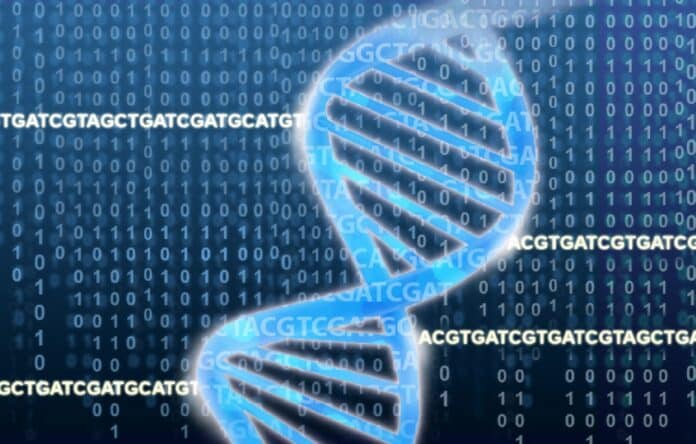The stability and fidelity of DNA are crucial for maintaining genetic integrity across generations. However, mutations can occur spontaneously during DNA replication and repair, leading to genetic diversity and potential diseases. It has been observed that mutation rates vary significantly across genomes, with some regions experiencing higher mutation rates than others. Understanding the underlying mechanisms that drive these differences in mutation rates is of great interest to genetics and molecular biology researchers.
The human body’s genetic information is stored in DNA, which can undergo mutations, significantly affecting human health and evolution. Researchers have been puzzled by the wide variation in mutation rates across the genome. While previous studies have looked at sequence context, new research suggests that DNA shape plays a critical role.
Each DNA base has its own 3D chemical shape and variations in this shape influence mutation rates. Many genome analyses have focused solely on the sequence of DNA bases, overlooking the importance of DNA’s 3D structure in understanding mutation rates. This discovery opens new avenues for understanding the factors contributing to genetic diversity and its impact on human biology.
First author Zian Liu, a graduate student in the Samee lab at Baylor College of Medicine, said, “We built a statistical model using only DNA structural information, otherwise ignoring the sequence data. We used the model to pinpoint which DNA shape features, such as stretches, twists, or tilts, underlie variations of mutation rates in the human genome. Surprisingly, although the sequence context may look very different from one mutation to another, the structural properties are remarkably similar.”
Researchers have discovered that the distance between paired building blocks in the DNA double helix, known as “stretch,” is a critical factor influencing mutation rates. This structural feature significantly affects the mutation rate for all mutations, surprising the researchers. Additionally, DNA tilt was found to be the second most influential structural feature on mutation rates.
The study confirmed that DNA shape plays a vital role in functionally relevant regions of the human genome, including gene expression regulatory sites. This mechanism is consistent across various species. The DNA-shape models developed by the researchers demonstrated comparable or improved performance compared to traditional sequence-based models and accurately identified mutation hotspots.
This study highlights the importance of considering DNA shape when studying variations in mutation rates in the human genome. The human genome has traditionally been viewed as a linear sequence of building blocks. However, this research demonstrates that DNA has a 3D structure with significant implications.
The findings suggest that DNA shape is consistent and meaningful in explaining mutation rate variations and is likely to be conserved among different species. This advancement in understanding DNA structure can enhance genomic analysis tools and contribute to a more comprehensive understanding of genetic mutations and their impact on human biology.
In conclusion, studying DNA tilting and stretching as determinants of mutation rates offers a novel perspective on the genetic processes that underlie genomic evolution and disease susceptibility. By elucidating these structural features’ influence on mutation rates, researchers can better comprehend the molecular basis of gene diversity and vulnerabilities. This knowledge may eventually lead to advancements in disease prevention, diagnosis, and personalized therapies in genetics and medicine.
Journal Reference:
- Zian Liu, Md Abul Hassan Samee, Structural underpinnings of mutation rate variations in the human genome. Nucleic Acids Research. DOI: 10.1093/nar/gkad551.
